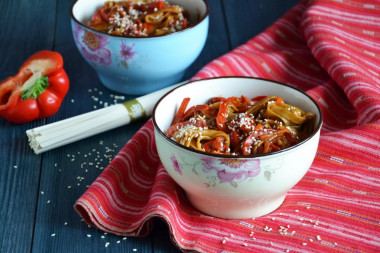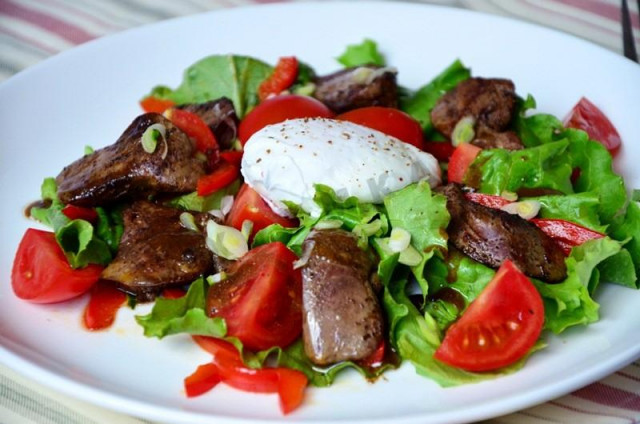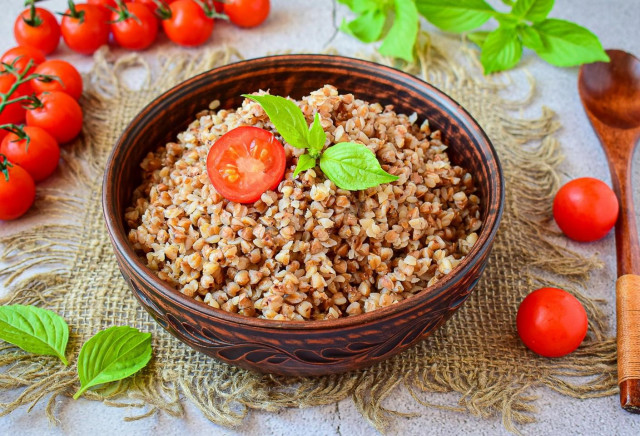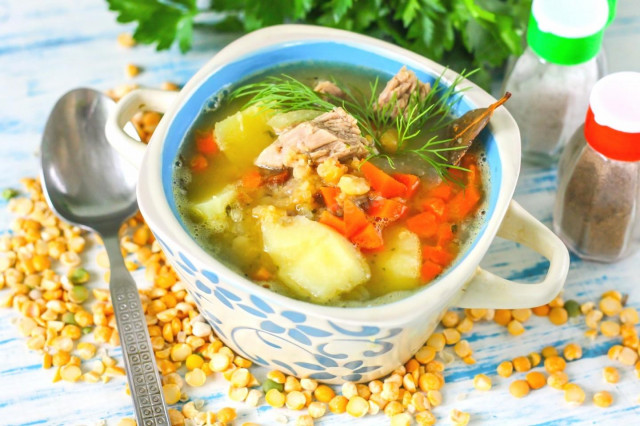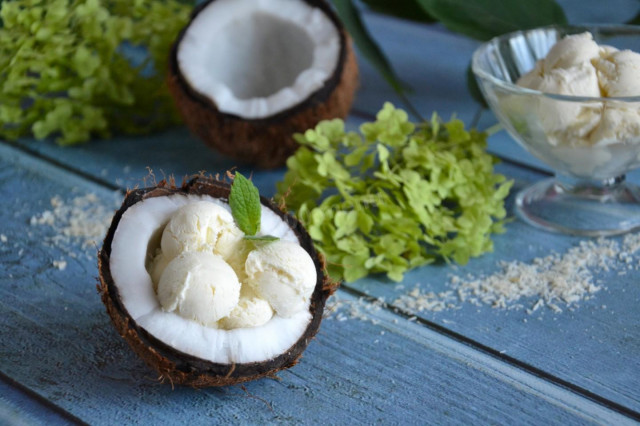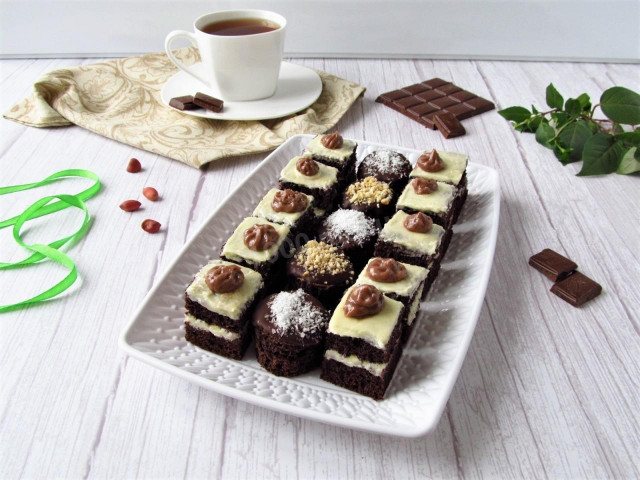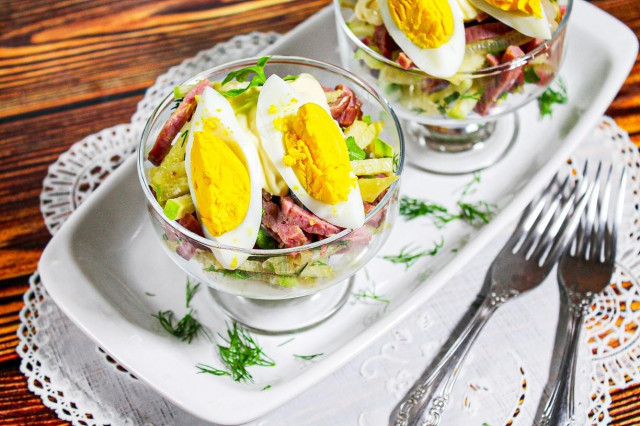Composition / ingredients
Step-by-step cooking
Step 1:
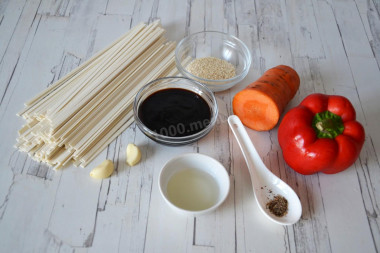
Prepare the ingredients. To cook udon noodles with vegetables and teriyaki sauce, we will need: actually, noodles, teriyaki sauce, bell pepper, carrots, garlic, vegetable oil, ground black pepper.
Step 2:
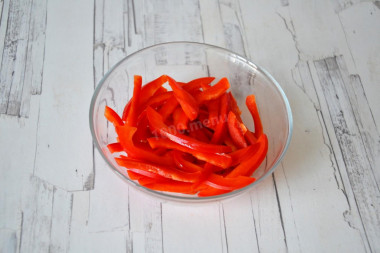
Cut bell pepper into strips.
Step 3:
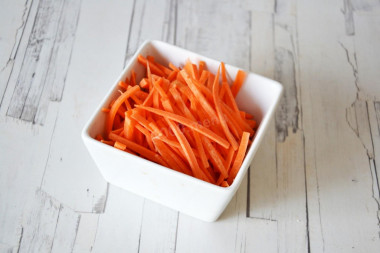
Peel carrots and cut into strips as well.
Step 4:
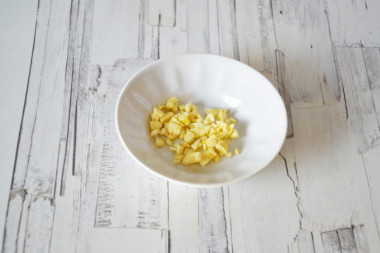
Peel garlic and finely chop.
Step 5:
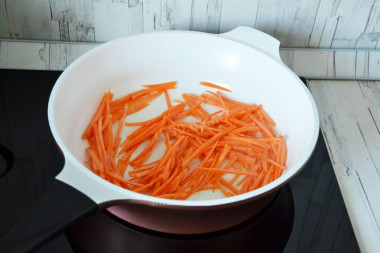
Heat vegetable oil in a frying pan. Lightly fry the carrots on it.
Step 6:
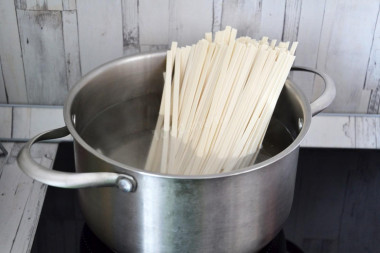
Boil udon noodles in salted water until cooked according to the instructions on the package. It took me 11 minutes on low heat. It is better to fry vegetables and cook noodles at the same time, so everything will take less time.
Step 7:
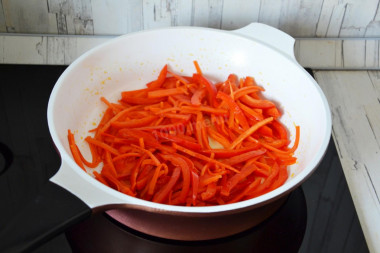
Add bell pepper to the pan with carrots and fry all together, stirring, for about 5 minutes.
Step 8:
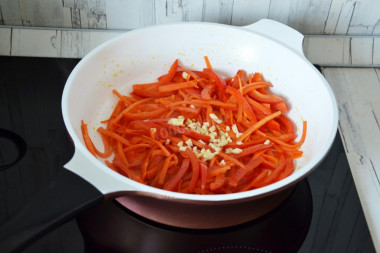
Add garlic, stir and fry together for another 1 minute.
Step 9:
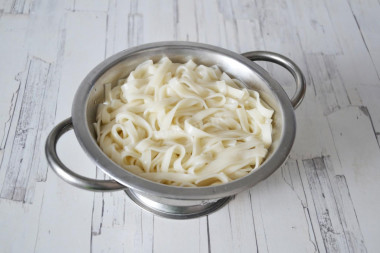
Throw the finished noodles into a colander and let the water drain.
Step 10:
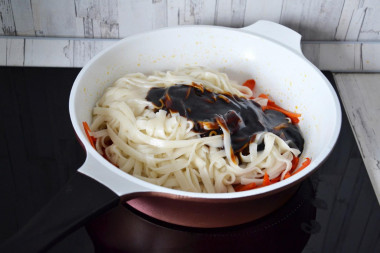
When all the moisture from the vegetables has evaporated, add noodles and teriyaki sauce to the pan. Mix everything thoroughly and remove the pan from the heat.
Step 11:
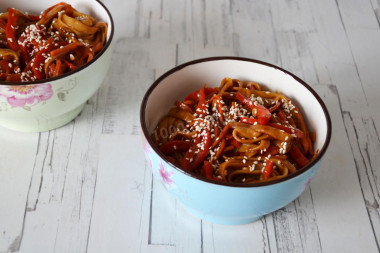
Arrange the noodles on plates and sprinkle with sesame seeds. Serve the noodles immediately. You can eat with traditional chopsticks or a regular fork. Enjoy your meal.
Noodles are a national product and one of the cultural elements of Japan, second in popularity only to rice. They make it from wheat flour.
The Japanese learned about noodles back in the 8th century AD, borrowing a recipe from the Chinese. In the annals, it was called sakubei, muginawa or tabata (Chinese names for noodles of that time).
The word udon comes from the South Chinese name of wontons (semicircular dumplings that are usually used in soups). This type of noodles became popular in Japan during the Edo period (17th-19th century). The appearance of udon is associated with the Buddhist priest Kukaya, who brought from China a recipe for cooking this noodles, « food for the mind, spirit and body».
Varieties of this noodles can be counted about 30 pieces. There are noodles that are flat and thick, there are flat and thin, some types resemble spaghetti in shape and vary in thickness. Like Italian pasta, Japanese noodles can be hard, soft and medium hard.
Udon noodles can be used for first and second courses.
Caloric content of the products possible in the composition of the dish
- Sweet pepper - 27 kcal/100g
- Carrots - 33 kcal/100g
- Dried carrots - 275 kcal/100g
- Boiled carrots - 25 kcal/100g
- Garlic - 143 kcal/100g
- Ground black pepper - 255 kcal/100g
- Vegetable oil - 873 kcal/100g
- Dried whole sesame seeds - 563 kcal/100g
- Shelled sesame seed - 582 kcal/100g
- Udon Noodles - 337 kcal/100g
- Teriyaki sauce - 89 kcal/100g


